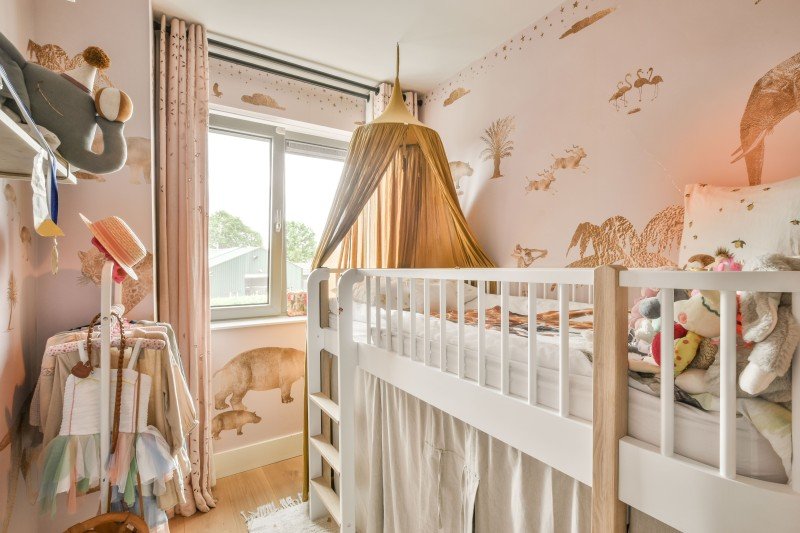The Expert Guide To Bunk Bed

A Comprehensive Guide to Children's Bunk Beds: Styles, Benefits, and Safety Considerations
Bunk beds have ended up being a popular option for households wanting to take full advantage of space and provide an enjoyable sleeping environment for kids. With their distinct style, they offer an imaginative and useful service for shared bedrooms, playrooms, or even guest accommodation. This article explores the various designs of children's bunk beds, their benefits, safety factors to consider, and answers some frequently asked questions.
The Allure of Bunk Beds
Children's bunk beds are more than just space-saving structures; they are likewise a gateway to adventurous dreams and imaginative play. Below is a comprehensive evaluation of their many benefits.
Advantages of Bunk Beds
- Space-Saving: Bunk beds effectively make use of vertical space, making them a perfect choice for smaller sized rooms.
- Spirited Design: Many bunk bed designs consist of slides, camping tents, and themed aspects, stimulating creativity and enjoyment.
- Partner Sharing: Bunk beds are ideal for brother or sisters sharing a room or accommodating pajama parties.
- Versatile Use: Some designs can be separated into two individual beds, offering versatility as kids grow.
- Storage Options: Many bunk beds include integrated drawer storage or racks, even more enhancing their practicality.
Styles of Children's Bunk Beds
The range of bunk beds readily available today deals with different choices and requirements. Below is an overview of some popular styles.
| Design | Description | Best For |
|---|---|---|
| Standard Bunk Bed | A conventional design featuring one bed stacked above another. | Siblings sharing a space. |
| Loft Bed | Comparable to a bunk bed without the bottom bunk, enables an office or play area listed below. | Minimal space for play/desk. |
| L-Shaped Bunk Bed | Two beds set up in an L-shape, often with extra sections for storage or play. | Special space designs. |
| Twin Over Full | A twin bed over a full bed, accommodating various sleep requirements. | Growing kids and teens. |
| High Sleeper | Stands even higher than a loft bed, usually featuring a desk or play area listed below. | Older kids requiring more play/desk space. |
| Tent Bunk Bed | Bunk beds with a canopy or tent-like structure, developing a cozy, enjoyable space. | Active and imaginative kids. |
Secret Features to Consider
When choosing the right bunk bed for kids, the following features are worth thinking about:
- Material: Bunk beds can be made from wood, metal, or a combination. Each has its special visual and toughness.
- Weight Capacity: Always verify the weight limit of the bunk bed to ensure it can accommodate your children securely.
- Safety Rails: Ensure the top bunk has durable rails to prevent falls.
- Ladder Security: A properly designed ladder needs to offer simple and safe access to the upper bunk.
- Completing: Ensure any finishes are non-toxic and safe for kids.
Security Considerations
Security is paramount when it concerns kids's bunk beds. The following standards ought to be stuck to:
- Age Appropriateness: Generally, kids under six years of ages must not sleep in the upper bunk due to safety risks.
- Tough Construction: Ensure the frame and products are strong and can support the weight without drooping.
- Regular Maintenance: Periodically look for loose screws, bolts, or other parts that might require tightening up.
- Clear Play Area: Keep the location around the bunk bed devoid of toys and obstacles to decrease tripping threats.
Setting Rules for Safe Use
Developing guidelines for bunk bed usage will assist guarantee security:
- Limit Jumping and Climbing: Children must be encouraged versus leaping from the top bunk and getting on the sides.
- Supervising Sleepovers: Monitor young guests while they are utilizing the bunk bed for the first time.
- Educate on Ladder Use: Teach how to use the ladder safely, emphasizing the value of dealing with the ladder when climbing or down.
Frequently Asked Questions
1. What age is appropriate for a kid to sleep in the leading bunk?
Most manufacturers suggest that kids must be at least six years old to sleep in the upper bunk. This standard is created to reduce the danger of falls.
2. Can bunk beds be customized?
Yes, many manufacturers provide customizable options, consisting of colors, materials, and extra functions like drawers or desks.
3. Are bunk Cristopher Wohlrab for weight?
Bunk beds have weight limitations, usually varying from 200 to 400 pounds, depending upon the design and product. Always examine the maker's requirements.
4. How do I preserve and clean up a bunk bed?
Regularly look for loose parts, keep the bed tidy by wiping down surfaces, and guarantee the bed linen is fresh to promote a safe and sanitary sleep environment.
5. Can bunk beds be separated into individual beds?
Lots of bunk beds feature a choice to separate them into 2 individual beds, offering long-term flexibility.
Children's bunk beds are more than simple furniture; they are a practical, flexible, and imaginative component of a child's space. With numerous designs offered and various safety factors to consider to bear in mind, moms and dads can pick the best bed that fits their space, satisfies their children's requirements, and imparts a sense of experience. By comprehending the benefits, styles, and security measures associated with bunk beds, families can produce a wonderful and safe sleeping environment for their kids. Whether for siblings sharing a room or space-saving services, bunk beds stay a precious option for many households.

